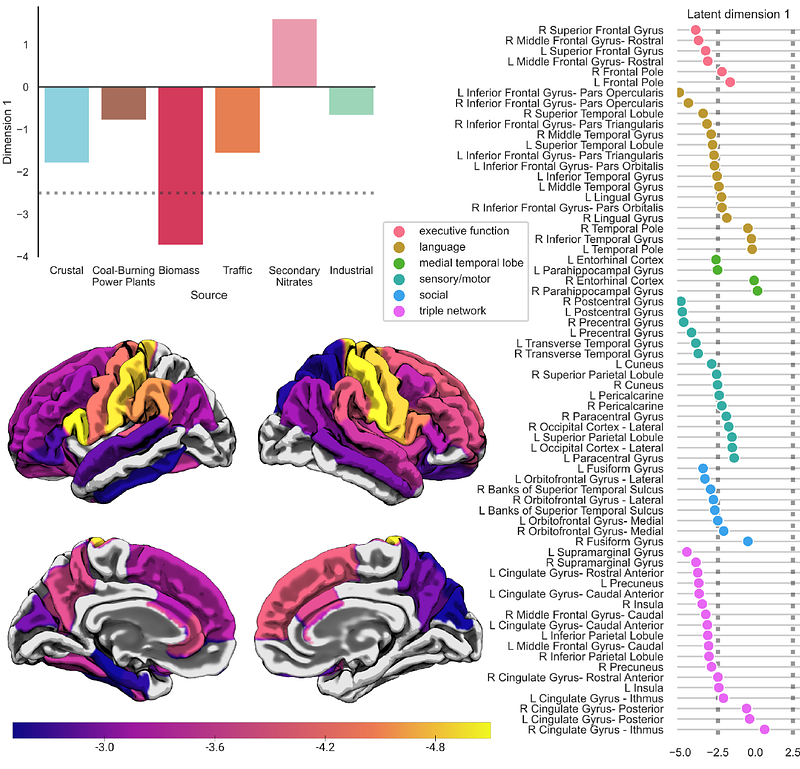Air pollution from biomass burning disrupts early adolescent cortical microarchitecture development

Air pollution from biomass burning disrupts early adolescent cortical microarchitecture development
Bottenhorn, K. L.; Sukumaran, K.; Habre, R.; Schwartz, J.; Herting, M.
AbstractExposure to outdoor particulate matter (PM2.5) represents a ubiquitous threat to human health and, in particular, the neurotoxic effects of PM2.5 from multiple sources may disrupt neurodevelopment. Studies addressing neurodevelopmental implications of PM exposure have been limited by small, geographically-limited samples and largely focus either on macroscale cortical morphology or postmortem histological staining and total PM mass. Here, we leverage residentially-assigned exposure to six, data-driven sources of PM2.5 and neuroimaging data from the longitudinal Adolescent Brain Cognitive Development Study (ABCD Study), collected from 21 different recruitment sites across the United States. To contribute an interpretable and actionable assessment of the role of air pollution in the developing brain, we identified alterations in cortical microstructure development associated with exposure to specific sources of PM2.5 using multivariate, partial least squares analyses. Specifically, average annual exposure (i.e., at ages 8-10 years) to PM2.5 from biomass burning was related to impaired neurite development across the cortex between 9 and 13 years of age.